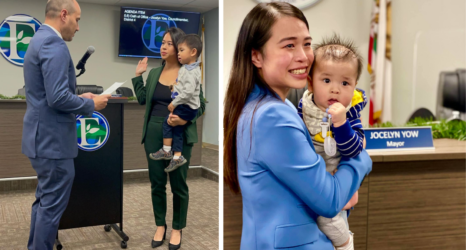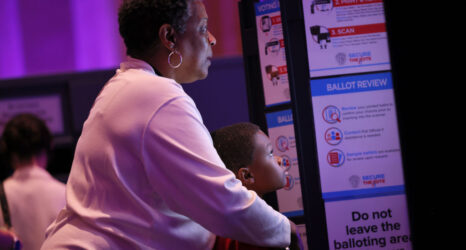Opinions expressed here are the author’s own. Ms. is published by Feminist Majority Foundation, a 501(c)3 organization, and does not endorse candidates.
Twenty-seven years ago, all eyes were glued to Anita Hill as she testified, professionally and emphatically, before the entirely white and male Senate Judiciary Committee about the sexual harassment she received from then-Supreme Court nominee Clarence Thomas. Last month, the world watched as history unfortunately repeated itself, and Dr. Christine Blasey Ford testified before the same body about her allegations that then-Supreme Court nominee Brett Kavanaugh attempted to rape her in high school.
The Senate voted in 1991 to confirm Clarence Thomas, and in 2018 to confirm Brett Kavanaugh. But mixed in with the misogyny that has been on display from our lawmakers is something we should all feel hopeful about: a record 23 women now serve as Senators, and four of them sit on the very committee that heard Blasey Ford’s testimony.
It took 27 years to get four women on the Senate Judiciary Committee, and their presence mattered. Progress is slow, but it is happening.
One of my first jobs in politics was working to raise money for Carol Moseley Braun, who would go on to become the first Black woman U.S. Senator in history. I remember both the anger that I felt watching the Anita Hill hearings and the jubilation that came with the record number of women who were elected the next year, including Sen. Braun. Fast-forward 27 years: The nation just the second Black woman senator in history grill another Supreme Court nominee about his sexual misconduct, all amidst a backdrop of a massive spike in women candidates at every level and on ballots in every state.
Watching Senators Kamala Harris, Amy Klobuchar, Mazie Hirono and Dianne Feinstein calmly question Brett Kavanaugh and listen intently to Blasey Ford’s testimony was an important reminder of how imperative it is that women have a seat at the table, on the committee and in the hearing room. Their presence was also a reminder that we can—and will—get to equal representation in our governing bodies.
Many of the stories told this year speak of a wave of women who woke up the day after the election and decided to run for office, but this movement began long before the 2016 election. There is a large group of women who have been preparing for this moment for years. Together, with women inspired to run by recent events, they will continue to build this movement.
All but three of the 23 women currently serving in the Senate began their careers in state and local politics. The few who didn’t serve in elected office prior were public servants in other ways: six started out their careers elected at the county and local level; 14 served as state representatives or senators; and some were prosecutors. Some of the breakout stars of the 2018 elections bring similar depth of experience to the campaign trail.
Deb Haaland, who is running in New Mexico, served as a tribal leader for the Pueblo of Laguna, ran for Lieutenant Governor. If elected, she will be the first Native American woman in Congress. She is also a 2007 graduate of the New Mexico affiliate of Emerge America, the national organization I lead that recruits, trains and provides a powerful network to women who want to run for office. In Maine, Emerge alum Erin Herbig, who was elected to the state House in 2010 and currently serves there as Majority Leader, is running for the state Senate. In Arizona, Emerge alum Katie Hobbs is running for Secretary of State after eight years in the state legislature.
These women, and thousands of others like them, are among the candidates that are energizing the electorate and inspiring predictions of a “pink wave.” But a wave won’t do much good if, come 2019, the momentum has faded. That’s why we must be dedicated to recruiting, training and preparing women for campaigns in 2020, 2022, 2024 and beyond.
We must lay the groundwork for women to continue running for office. Our strategy must be to turn this wave into a lasting movement, to build the bench and fill the pipeline with qualified, well-trained women who have the skills needed to run—and win. If we make that investment now, we’ll be reaping the benefits of the collaborative, effective leadership of women for decades to come.
It doesn’t end in November. When this midterm moment is over, our movement continues.





